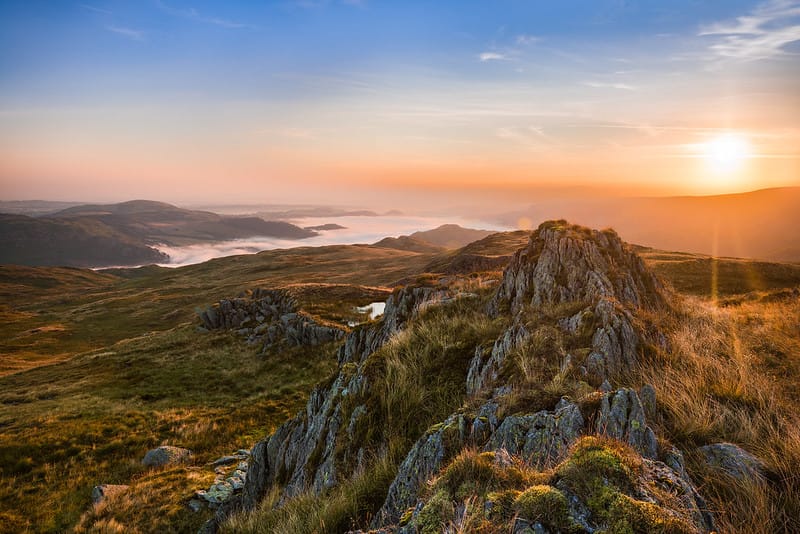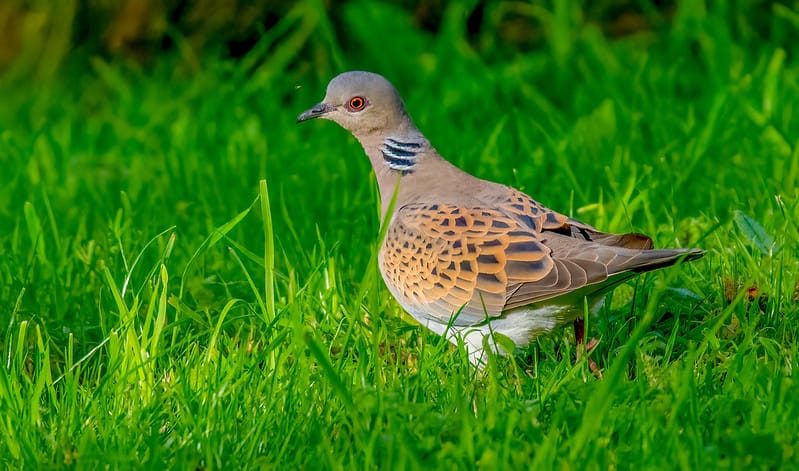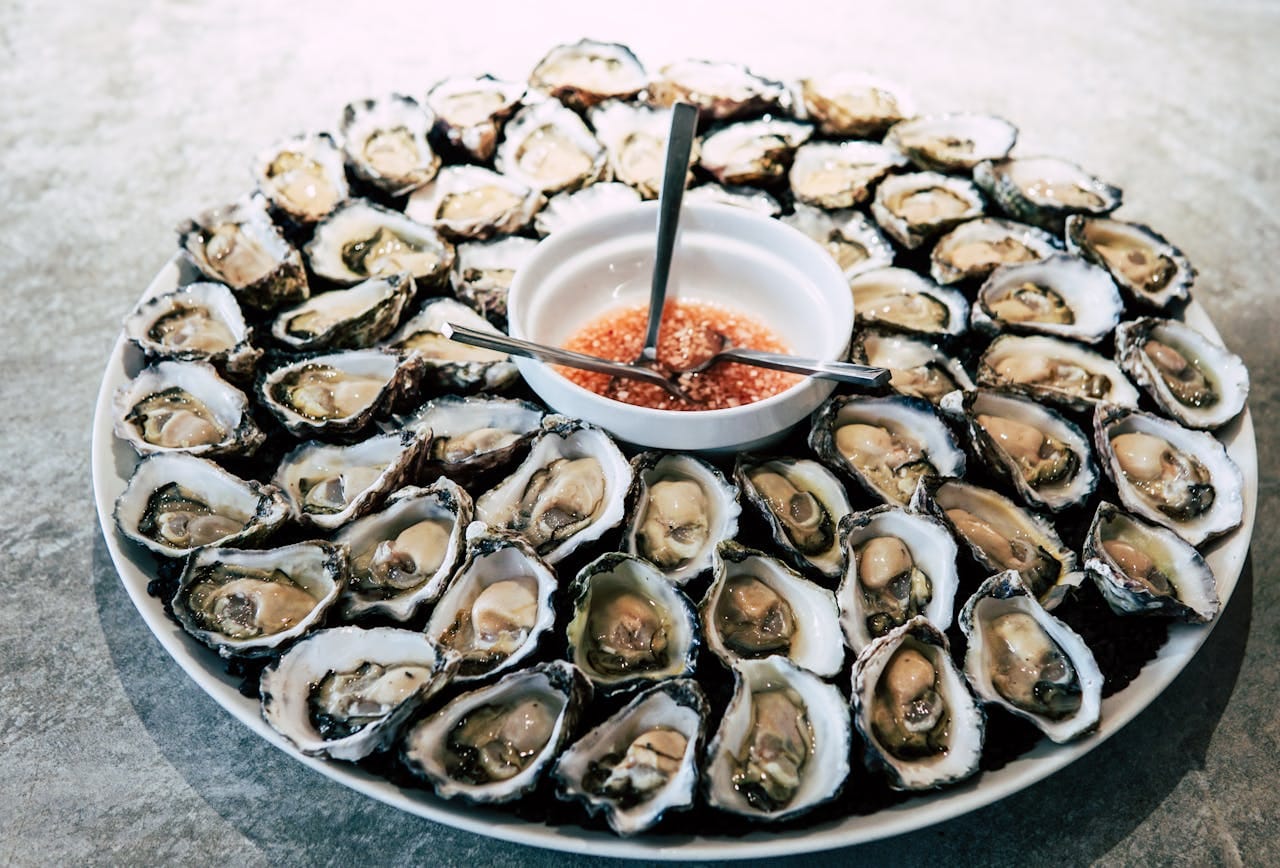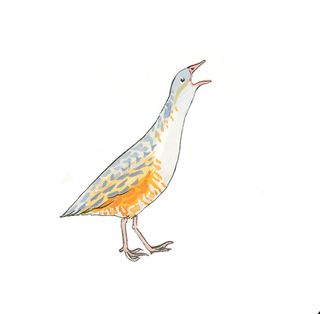
Labour Victory & How Conservationists Reacted
The latest news on nature and conservation in Britain.
Good evening! Here is this week's digest – slightly delayed, but that's because I wanted to round up all the election news and reaction. This edition is FREE TO READ, so please feel free to share. If you want to receive the digest every Friday, sign up today.
National news
Results | As expected, Labour has won the General Election in a landslide. Keir Starmer is in and Rishi Sunak is out. The Green Party also had a strong result, quadrupling their representation in the Commons with the addition of three new seats, including two taken from rural Conservative candidates. The party’s co-leader, Carla Denyer, said the party would use its increased presence to push Labour further on issues including climate change and clean water. Among the Conservatives to lose their seats was former environment secretary Thérèse Coffey, whose unpopularity was partly due to her failure to address sewage in water – although receiving a damehood in the government’s dissolution honours list may have softened the blow. ENDS has rounded up the other key environmental politicians to have lost their seats. Likewise, Farmers Weekly reported a wipe-out of MPs with farming connections. According to Greenpeace, 18 out of 23 Conservative net-zero sceptics also lost their seats. In his blog, Mark Avery points out that the grouse moors of North Yorkshire are still held by Conservatives, but that those of Northumberland, County Durham, South and West Yorkshire and Derbyshire now sit within Labour seats. BusinessGreen has a roundup of the environmental appointees to Starmer’s new cabinet, along with an overview of their briefs.
Reactions | If Keir Starmer thought his victory would propel him to overnight fame, the RSPB’s first post on X following the result no doubt brought him back down to earth. ‘This Puffin has no idea who you are,’ said the organisation. ‘Yet your decisions will affect them, and all UK wildlife, immensely.’ It wasn’t the only charity to urge the new prime minister to act quickly on nature. CPRE said it stood ready to work with the government to ‘deliver our vision of a thriving and beautiful countryside for everyone’, highlighting in particular Labour’s manifesto promise to create a land use framework to guide future decision-making. CPRE’s new president, Mary-Ann Ochota, vowed that the charity would not block Labour’s house building ambitions, reports the Times. ‘The countryside isn’t this place for nostalgia,’ she said. The Wildlife Trusts, meanwhile, has a list of priorities for the government’s first 100 days, including stopping river pollution and increasing the budget for wildlife-friendly farming. Finally, the Guardian has a feature on what Labour’s win means for the transition for a green and low-carbon economy and society. Craig Bennett of the Wildlife Trusts sums the situation up nicely: ‘All the attempts to make culture wars out of the climate and nature crises in the last eighteen months did not help the Conservatives one little bit, and that’s a very important lesson for all parties.’
X | The election has more or less drowned out other nature-related news this week, so we will leave you with a selection of further reactions from people on X, getting into the weeds of the environmental issues that Keir Starmer and his party will face in the months and years ahead.
🚨 CEN's @samuelhall0 reacts to the #GeneralElection2024 results:
— Conservative Environment Network (@CEN_HQ) July 5, 2024
"We must champion the environment and put forward a positive conservative agenda to tackle climate change." pic.twitter.com/vuqFjqt0uP
Labour committed to a net zero energy system by 2030. No reason not to de-carbonise farming on the same timescale. This would mean radically reducing reliance on synthetic nitrogen, phasing out industrial livestock, and scaling agroecology. Let's do it.https://t.co/LLrrXDwaXx
— Rob Percival (@Rob_Percival_) July 5, 2024
With @Keir_Starmer pledging to unite Britain&build back a nation’s & trust in government brick by brick I hope @UKLabour show the nature leadership we so badly need starting with the easiest act: mandating swift bricks. In Labour’s hands is swifts’ existence. pic.twitter.com/9fg0AfagCj
— Hannah Bourne-Taylor (@WriterHannahBT) July 5, 2024
Dear @Keir_Starmer,
— Somerset Wildlife Trust (@SomersetWT) July 5, 2024
Let's talk about PEAT! 🌿
The last @GOVUK made a number of big commitments for nature — but it failed to follow through on many of its promises. At the top of the list, was its commitments around peat. (1/4) 🧵#Somerset #Peat #BogsNotBags pic.twitter.com/jaaojXihnK
Keir Starmer must now show real leadership on climate and nature - at home and abroad - showing that the green transition can be fair and equitable.
— Greenpeace UK (@GreenpeaceUK) July 5, 2024
To do that he must:
💎 take on the elites
📈 increase taxes on the super-rich and polluting companies
💰 invest, invest, invest
Congratulations to new PM @Keir_Starmer #NationalParks can help deliver the bright future @UKLabour want to build - for people, nature & planet
— Campaign for National Parks (@Campaign4Parks) July 5, 2024
But only if they're given the support they deserve 🏞️
Here's what we want to see from the new government 👇 https://t.co/ufD9K6apRE
Across the country
Loch Arkaig | Two osprey chicks are to be relocated from Scotland to the Pego-Oliva Marsh Natural Park in Spain, after it became apparent that the father was no longer able to provide enough food. The translocation is a partnership between the Woodland Trust Scotland and the Roy Dennis Foundation. The Trust said it would never normally intervene in such situations, but it was apparent that something was amiss with the male raptor, and that it would be ‘needlessly dogmatic’ to let the chicks starve to death. Ospreys became extinct from the Spanish region in the 1980s, and it is hoped this project will help to restore it. ‘Scotland has reintroduced species such as beaver, red kite and sea eagle thanks to other nations gifting us their animals,’ said a spokesperson from the Trust. ‘I think it is great that Scotland is giving this gift to Spain and we are proud this Arkaig pair are going to be a part of that.’ The BBC, the Telegraph and the Herald covered the story.
County Durham | The Durham Wildlife Trust has succeeded in its most ambitious fundraising attempt to date, raising £54,000 in just one week. The money will allow the purchase of a tract of land adjacent to Rainton Meadows, the 74-hectare reserve where the charity maintains its headquarters, that had been at risk of development. Around two decades ago, this site was an opencast coal mine; now it is a mixture of wetlands and grasslands, and home to more than 200 species of birds. The charity aims to introduce new plant species to the additional using green hay, and to bring in conservation grazing to create more flower-rich meadows. The purchase will increase the size of the reserve by 30%. The Northern Echo covered the news, and also featured a separate interview with Emily Routledge, who spearheaded the fundraising campaign.
London | The urban rewilding charity Citizen Zoo is examining whether white storks could be returned to Greater London, with a working group established to seek out habitat and gauge the political will for a reintroduction. The birds were successfully reintroduced to southern England in 2016, and successfully bred in 2020 for the first time in England in six centuries. There have been 40 sightings of white storks visiting parts of the capital in recent years, including around Wandsworth Common; in Europe, some nest on the fringes of large cities. ‘We don’t know if it’s possible yet but how amazing would it be if white storks nested in St James’s Park, beside Buckingham Palace, as a symbol of ecological recovery in the capital?’ said Elliot Newton, co-founder of Citizen Zoo. The Guardian covered the story.
Elsewhere:
- Up to 1,000 hectares of farmland in Enfield could become a haven for nature, making it the largest scheme in London of its kind, reports the BBC.
- Puffin numbers are up by a third since 2017 on the Isle of May, reports BirdGuides.
- A philanthropist is set to gift 8,000 acres of land to a Highland community, reports the Scotsman.
- Wicken Fen, a National Trust nature reserve, has been named a dragonfly hotspot, following habitat creation aimed at the insects, reports the BBC.
- Campaigners are objecting to a proposed wind farm on protected peatland in Yorkshire, on the grounds it would release carbon, harm wildlife and increase flood risk, reports the Yorkshire Post.
- Ecologists are hoping to lure rare newts to a site in the Scottish Borders by restoring their overgrown wetlands, reports the BBC.
- Two lynx kits have been born at a zoo in Devon, reports the BBC.
- The King’s plan to turn buildings at Balmoral into holiday lets may be held up by roosting bats, reports the Times.
- A photographer from Neath has been found guilty of disturbing the nest of a honey buzzard, reports BirdGuides.
- Conservationists on Islay have turned a disused runway into a breeding ground for little terns, reports the Herald.
- A pair of reed buntings have bred successfully in Jersey for the first time in 27 years, reports the BBC.
- The University of Reading has purchased farmland worth £16m, where it will carry out research into food and agriculture, reports the BBC.
- A new exhibition based on the felled Sycamore Gap tree will offer an opportunity for people to grieve, reports the Telegraph.
- Two Kunekune pigs have been introduced to Gunnersbury Park as part of a conservation grazing scheme, reports the BBC.
Reports
Turtle Doves | Numbers of turtle doves across western Europe jumped by 25% – equating to an additional 400,000 breeding pairs – in the two years following a 2021 moratorium on hunting. Prior to the ban, around a million turtle doves were being killed every year in France, Spain and Portugal alone. The success of the measure has persuaded these nations to extend the ban into its fourth year. While turtle doves are not hunted in the UK, landowners and farmers still have a role to play in ensuring the species’ recovery by ensuring that they have safe places to breed when they arrive in the country, following their 3,000-mile migration from sub-Saharan Africa. The figures were revealed in a report to the European Commission. The RSPB announced the results, and the news was covered by BirdGuides.

Coal | The Coal Authority has released its nature recovery plan, covering 2024 to 2026. The body exists to manage the legacy of Britain’s coal-mining past, including more than 1,300 hectares of land that support diverse habitats. The four priorities in its new plan are to improve the connection between people and nature; to build the value of nature into all its work; to connect and improve nature networks; and to build strong partnerships for nature. However, despite its title, the plan seems to focus on minimising biodiversity loss rather than promoting gain: ‘We will assess the impact of our operations on natural habitats and will strive to minimise nature loss and add additional value where possible,’ according to the document.
Nature | Nature-based solutions are seen as an opportunity to tackle both the biodiversity and nature crises simultaneously – but the concept has both its supporters and detractors. A new report from the Nature-Based Solutions Initiative, based at the University of Oxford, explores these competing narratives and how to combat the criticisms. Some of the biggest issues include questions around whether nature-based solutions simply perpetuate business-as-usual by avoiding structural change, and whether they lead to the marginalisation of Indigenous people and local communities. ‘Transformative pathways can emerge by embracing Indigenous ontologies and relational thinking, placing humans within nature, and shifting from an instrumental value to one of relationship with nature,’ the report concludes.
Science
Gardening | It has been shown that gardening can have a positive impact on mental health, but does it matter how you garden? A study published in Urban Forestry & Urban Greening suggests that those engaging in sustainable horticultural practices experience greater health and wellbeing benefits than those that don’t. The sensation of doing something morally good is not sufficient to explain the difference. The authors suggest that the causes may be manifold, including improved environmental conditions, increased opportunities for psychological restoration and nature connection, higher levels of physical activity, and the formation of stronger bonds with the more-than-human. Or, as co-author Alistair Griffiths put it on X, ‘When you help the Earth through gardening, it helps you back.’
History | Historical ecology is a growing and interdisciplinary field that has the potential to enhance present-day conservation efforts. A review of the existing literature, published in Endangered Species Research, highlights some of the most important questions to which scholars can contribute, covering the restoration of both marine and terrestrial ecosystems. These include issues such as the appropriate baseline for conservation efforts, the role of natural history museums in expanding the relevance of historical ecology, and how to document past drivers and impacts of climate change. The paper concludes with a reference to the recent debate over whether humanity has recently moved into the Anthropocene: ‘Perspectives from historical ecology [are] crucial for understanding both how we arrived at present day conditions and illuminating the path ahead.’
Fibreglass | Oysters and mussels collected from Chichester Harbour contain fragments of fibreglass, according to a study published in the Journal of Hazardous Materials – the first study of such contamination in bivalves. The researchers stressed the need to investigate how these particles transferred up the food chain, and whether there were any likely consequences on human health. ‘These microparticles negatively impact the physiology and behaviour of aquatic organisms,’ the paper concluded. ‘Given the recent sales spikes in recreational boats and the lack of recycling solutions, it is imperative to determine the scale of the GRP [fibreglass] contamination and the biological impact.’ The BBC covered the research.

Driftwood
Scotland | A feature in the Times looks at the history of and present-day controversies around land use in Scotland, focusing in particular on the beleaguered ‘Lost Forest’ established by Brewdog near Aviemore. Hundreds of thousands of those saplings have now died, but campaigners question whether trees should have been planted there anyway. ‘There is inevitable disturbance of the soils which brings peaty ground to the surface, leading to carbon loss for decades,’ says Dave Morris, who has been one of the leading critics of the project. Beyond that, there is the question of whether these ‘green lairds’ contribute positively to Scotland’s communities. By purchasing large areas of land to reforest and rewild, rich landowners are pushing up land prices and exacerbating the problems that began with the Clearances, as various people within the feature explain.
Knepp | Wilding, the new documentary about the rewilding of the Knepp Estate in West Sussex, is the subject of an in-depth review in Nature Ecology & Evolution. The documentary captures the beauty of the scrubbed-up landscape, but fails to interrogate key ecological concepts, concludes Patrick Goymer. The feature is as much an interrogation of the Knepp project itself as the actual documentary. It acknowledges the ‘risky’ dependence on the Vera Hypothesis, which is the ideological underpinning for the restoration work underway at Knepp, and suggests that ‘the project continues to struggle to throw off the whiff of being an aristocratic hobby’. It also suggests that the film could have included the voices of the many people involved in monitoring the ecological changes at Knepp. Fundamentally, writes Goymer, both the Knepp project and the film are ‘romantic endeavours that are driven by ideals more than meticulous evidence’. In a similar vein, the Guardian called it ‘an inspirational puff piece’.
Pleistocene | Smithsonian Magazine has published a fascinating excerpt from Ferris Jabr’s new book, Becoming Earth, which comes out in the UK next month. The passage in question discusses the early days of Pleistocene Park – an outlandish attempt to restore the primeval Mammoth Steppe within a 35,000 acre patch of Siberia through the reintroduction of missing herbivores. The feature discusses the science and reasoning behind the experiment, as well as the expedition of the project leaders – a father-and-son team called Sergey and Nikita Zimov – to the remote Wrangel Island, where they hoped to capture some musk oxen. But the overriding message concerns the co-evolution of animals and their landscapes, of which the Mammoth Steppe is a prime example. ‘Life and environment continuously shape one another and Earth as a whole,’ Jabr writes.
Further reading:
- A feature in the New Statesman celebrates Waterlog, the only book that Roger Deakin published in his lifetime.
- In the Guardian, Helen Scales describes how to spot wildlife on the British coast, from cuttlefish to jewel-like shells.
- Aquatic garden plant sales are booming, according to the RHS, as Britain embraces pond life. The Guardian covered the story.
- The failure of scientists to acknowledge the existence of gay animals is another example of our human-centric approach to nature, writes Elle Hunt in the Guardian.
- The Telegraph has a feature on Britain’s prettiest – and smelliest – town.
- A new children’s book discusses the reintroduction of bison to Kent, according to the Wildlife Trust.
- The Guardian has a photo series on efforts to protect Scotland’s peregrines.
Happy days
Eagles | It seems that not all of nature is red in tooth and claw. The Times reports on an ‘unusually sentimental’ pair of white-tailed eagles on the Isle of Mull, who are still caring for their injured chick after it fell from the nest in July last year. The ‘highly unusual act of compassion’ has astonished conservationists, with the behaviour flying in the face of expectations. The stellar parenting was first witnessed by Dave Sexton, the RSPB officer for Mull, while monitoring the birds early in the season; it was the sound of a young eagle – not normally heard till August – that caught his attention. ‘We normally think of eagles as hard-wired and unemotional but clearly there might be another side to their nature,’ he said. The BBC has footage of the chick in flight.
Subscribe to our newsletter
Members receive our premium weekly digest of nature news from across Britain.
Comments
Sign in or become a Inkcap Journal member to join the conversation.
Just enter your email below to get a log in link.








